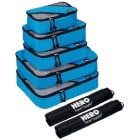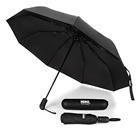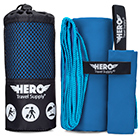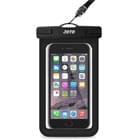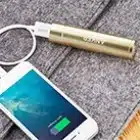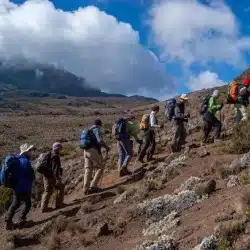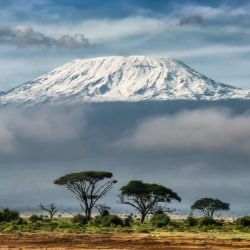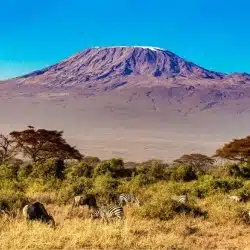DRY SEASON #1 – January, February:
Mount Kilimanjaro is located near the equator, so it doesn’t have traditional seasons like you get in more temperate regions. Instead, there are two rainy seasons and two dry seasons each year. That said, there is a noticeable difference in the temperature between the seasons on the mountain. The warmest months on Kilimanjaro are between December and February. January is the single hottest month, with average highs of 84 degrees Fahrenheit.
Remember, the temperature on Kilimanjaro differs drastically between the base of the mountain and the summit. When temps low on the mountain are in the 80’s, it’s often below 20 degrees on the summit. This time of year, sun protection is essential, along with a good pair of hiking shorts and t-shirts for the lower elevations.
RAINY SEASON #1 – March, April, May:
You are most likely to experience good weather on Kilimanjaro between April and September. This does overlap, however with the rainiest season on the mountain which is between March and May. April is the single month with the most precipitation. This time of year, lows average around 58 degrees Fahrenheit low on the mountain, with highs in the upper 70’s.
In the wet season, a high-quality raincoat is a must, along with waterproof pants and hiking boots. Don’t forget bug spray and a mosquito head net to fight off the insects.
DRY SEASON #2 – June, July, August, September, October:
June, July, and August are the coldest months on Kilimanjaro when average lows are around 48 degrees Fahrenheit near the base of the mountain and below freezing at the top. Fortunately, the cooler weather during this time of year comes with less rainfall, so trails will be easier to navigate and camp will be much more comfortable.
In the cool season, it’s even more important to bring warm base layers and insulation from the freezing temperatures near the top. Don’t forget your warm gloves and balaclava to protect your hands and face.
RAINY SEASON #2 – November, December:
The second rainy season on Kilimanjaro runs from November to December. Although these months don’t get as much precipitation as between March and May, you can still expect plenty of rain, especially in the rainforest zone. This time of year you can expect lows in the lower 60’s and highs in the low 80’s in the Kilimanjaro region.
To make sure that you don’t slip on the slick trails, bring your best pair of hiking boots to the mountain. Remember that you can expect to encounter a wide variety of conditions on Kilimanjaro no matter what time of year you choose to climb, so it’s always important to pack for everything from extreme heat to freezing cold.




